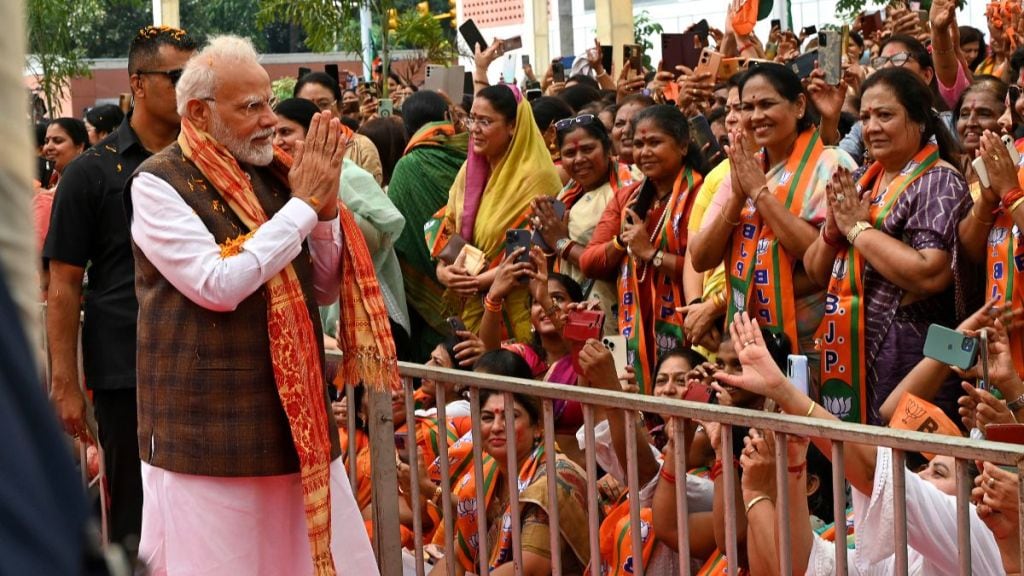Three dates are among the important dates in India’s Constitutional and Parliamentary history:
September 12, 1996: PM Deve Gowda’s government introduced the Constitution (81st Amendment) Bill in Parliament. The Bill provided for one-third of the seats in the Lok Sabha and State Legislative Assemblies to be reserved for women. It did not make further progress.
March 9, 2010: PM Manmohan Singh’s government piloted the Constitution (108th Amendment) Bill in the Rajya Sabha. It was similar to the 1996 Bill and was passed by a vote of 186:1. The Bill was transmitted to the Lok Sabha but remained pending in the Lok Sabha. With the dissolution of the 15th Lok Sabha, the Bill lapsed.
September 18, 2023: PM Narendra Modi’s government introduced the Constitution (128th Amendment) Bill in the Lok Sabha. The provisions for women’s reservation — one third of the seats in the Lok Sabha and the State Legislative Assemblies — are similar to the earlier Bills, but there are three caveats.
Shocking caveats
Once the Bill is passed by both Houses of Parliament and is assented to by the President, under new Article 334A, it will come into effect “after an exercise of delimitation is undertaken for this purpose after the relevant figures for the first census taken after commencement of the Constitution (One Hundred and Twenty-eighth Amendment) Act have been published…”
The Census was due in 2021; it was unconscionably delayed. The Census is a large, wide-ranging exercise and it will take two years to publish the results. The date of the next Census is indeterminate.
Re-allocation of seats to each state in the Lok Sabha was put on hold until 2026 by the Third proviso to Article 82 of the Constitution. Under the rule of ‘one person, one vote’, states in the south and west will lose seats and states in the north will gain seats. States that are likely to lose seats say they are being punished for moderating the growth rate of their population through better education, better healthcare and better communication of the benefits of limiting the size of families. Although the freeze will be lifted upon the publication of the result of the first Census taken after 2026, the exercise may face political obstacles. After re-allocation, the delimitation exercise will begin under a new Delimitation Act. The last delimitation exercise started in 2002 was completed after six years on February 19, 2008.
The sequence is, therefore, first Census taken after 2026; publication of the relevant figures; re-allocation of seats in the Lok Sabha; a new Delimitation Act; delimitation of constituencies; and finally reservation. The date when each step will be completed is indeterminate. The implementation of the Women’s Reservation Bill is dependent on these uncertain events. I fear that the time will go beyond 2029.
Passing the buck
The Modi government cannot feign ignorance of the hurdles that it has placed, by design or ignorance, in the way of implementation of the reservation for women. These hurdles were not there in the Bills of 1996 and 2010. Women will be justified if they charge the government with placing these hurdles deliberately. The Hon’ble Prime Minister, in his remarks made on three occasions on September 19, 2023, did not spell out how his government proposed to overcome these hurdles. The silence of the government on the pre-conditions is, to put it mildly, ominous. It is clear that the Modi government wants to pass the buck to the next government or to the one after the next. It is like giving a basket of fruit to women but forbidding them to eat the fruit in the foreseeable future.
Voters’ lists enough
Women are not adequately represented in many spheres, Parliament and state legislative assemblies among them. The problem can be traced to their social and economic status. The labour participation rate (LPR) among the workforce is 45.2%; among women, it is a dismal 20.6% (PLFS Jan-March 2023). Most women are obliged to work in their homes and that constrains them. The average years of school education of all children is 7-8 years; in the case of girls, it is likely to be lower. Adolescent girls and women are deprived of adequate nutritious food: 57% of women in the age group 15-49 years are anaemic (NFHS-5). A combination of lower social status, lower personal income and homemaker’s responsibilities has tethered women to their homes and inhibited their participation in the political sphere. Breaking new ground, Rajiv Gandhi and P V Narasimha Rao enabled nearly 13,00,000 women to be elected to Panchayat and Municipal bodies — thanks to reservation.
The next logical step is reservation in the Lok Sabha and state legislative assemblies. Women have waited for over 30 years since the idea was first mooted and it brooks no more delay. Identification of constituencies among existing constituencies that will be reserved for women does not require either a Census or delimitation. It requires only updated voters’ lists which are presently used in all states for reserving seats in panchayat and municipal bodies. New Article 344A inserted by the Bill is a thinly veiled attempt to divert and delay women’s reservation. It should be omitted.
Jumla is a Hindi word meaning, roughly, a tricky act or statement. On election eve in 2014 and 2019 the BJP rolled out several jumlas. The Women’s Reservation Bill is another.

